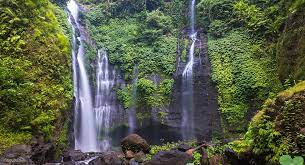Bali Aga, also known as the indigenous people of Bali, have a distinctive culture that is fascinating and often overlooked by tourists. These people, who are said to be the original inhabitants of Bali, have managed to preserve their traditions and customs despite the rapid modernization that the island has experienced in recent years.
One of the most fascinating things about the Bali Aga is their architecture. The traditional houses, known as Bale Agung, are made from bamboo and rattan and have a unique design that reflects the cultural beliefs of the people. The houses are usually raised off the ground, with a long, steeply sloping roof that extends almost to the ground. This design is said to represent the connection between the people and the gods, with the roof symbolizing the hands of God protecting and sheltering the people.
Another interesting aspect of the Bali Aga culture is their music and dance. The people of Bali Aga have their own unique instruments, such as the gender wayang, a type of metallophone, and the suling, a bamboo flute. The music is often accompanied by traditional dance performances, with intricate movements and colorful costumes that reflect the history and culture of the people.
The Bali Aga are also known for their weaving and textiles. The women of the community create intricate textiles, using traditional techniques that have been passed down through the generations. The intricate patterns and designs on these textiles often tell stories and reflect the cultural beliefs of the Bali Aga people.
Finally, the Bali Aga have a deep connection to nature. They have a traditional farming system known as subak, which is based on the principles of balance and harmony between humans and the natural world. This system has been recognized by UNESCO as a World Heritage Site and is a testament to the traditional wisdom of the Bali Aga.
In conclusion, the Bali Aga are a fascinating and often overlooked group of people who have managed to preserve their unique culture despite the challenges of modernization. From their traditional architecture to their music and dance, weaving and textiles, and connection to nature, the Bali Aga offer a hidden beauty that is well worth exploring.




